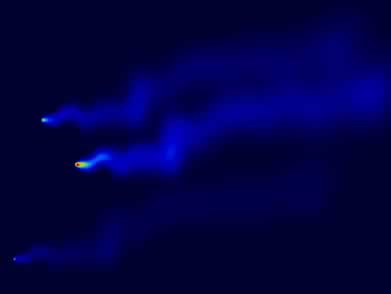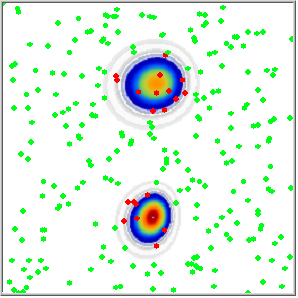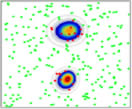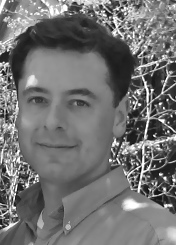Glenn T. Nofsinger
Research
Glenn T. Nofsinger holds a B.S. in physics from The College of William and Mary, and a Ph.D. in Engineering Sciences from Dartmouth College. His work centers on pattern detection and classification. The ultimate objective of many pattern detection problems is the recognition of high level behavior in large and noisy data sets. Bayesian statistical methods and machine learning techniques serve as excellent tools for such problems. With these fundamental techniques, he has designed applications in the disparate fields of distributed systems, sensor networks, social network analysis, image processing, and quantitative finance.
Specialties: Multiple hypothesis tracking algorithms, hidden Markov models, unsupervised clustering, and reinforcement learning.
Learn more about his mathematical genealogy at the Mathematics Genealogy Project.
Talks
Tutorials
- Hidden Markov Models
- Machine Learning
- Social Modeling with System Dynamics
- Distributed Source Localization
Software
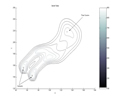
Projects

The Process Query System (PQS) technology developed at Dartmouth College is a new form of process filtering, with applications in tracking, detection, network security, video tracking, as well as my application of chemical plume detection. This is an active and ongoing project. Featured on the cover of IEEE Computer magazine Jan 2007. The main PQS group at Dartmouth College continues to apply this process detection to new application areas.
Papers
- Tracking Based Plume Detection. Glenn Nofsinger's PhD Thesis at Dartmouth College, 2006
- [PDF]
- "Airborne Plume Tracking With Sensor Networks." Glenn Nofsinger and George Cybenko. In Proceedings of the SPIE, Defense and Security Symposium - Conference 6231 - Unattended Ground, Sea, and Air Sensor Technologies and Applications VII, Orlando, FL, April 2006.
- [PDF]
- Distributed Chemical Plume Process Detection. Glenn Nofsinger, George Cybenko, In IEEE Military Communications Conference, MILCOM, Atlantic City, NJ, October 2005
- [PDF]
Plume Source Detection Using a Process Query System. Glenn Nofsinger, George Cybenko, In Proceedings of the SPIE Vol. 5416, Defense and Security Symposium - Chemical and Biological Sensing V,Orlando, FL, 2004- [PDF]
